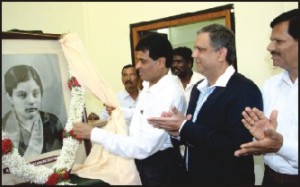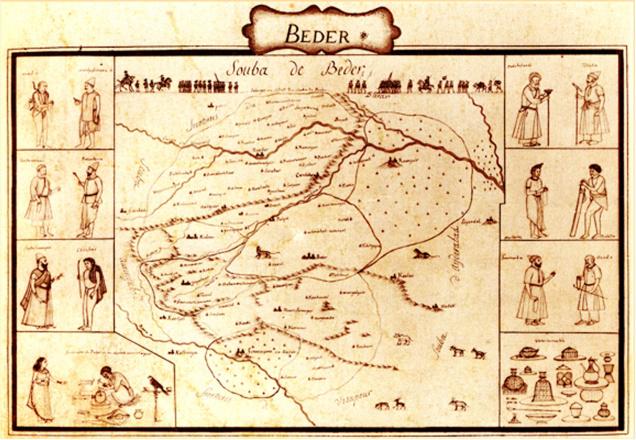Last month I received two copies of a book titled “The Vanished Raj” from Prism Books Pvt. Ltd., Bangalore, with a request to review it in our newspapers. It is the English translation of “Kelavu Nenapugalu” (Some Reminiscences) in Kannada written by Navaratna Rama Rao, who was an official in the government of the Maharaja of Mysore Krishnaraja Wadiyar IV during the first decade of the last century — 1904 to 1909. The original Kannada book was translated into English by the author’s grand children Navaratna Rajaram and Rajeshwari Rao.

I went through some pages and found both the language and the narration rather heavy for easy reading. For all his academic brilliance and post-graduate degrees, Navaratna Rama Rao could start his career in the Palace from a Junior official’s level — Amildar. Of course, he tells us how he lost a higher position at the entry point. He mentions of that illustrious Kannada litterateur, author of “Chikkaveera Rajendra” Masti Venkatesh Iyengar, who was his colleague and M.A. Srinivasan who too has written a book in English about his days in the service of the Maharaja’s government as a Minister. I had read this book many years ago. It was very readable, both language-wise and content-wise.
Having failed to proceed further with the book which indeed might interest and even benefit Revenue Officers, beginning from the Village Accountants and Gram Panchayat Members, I must credit this book for its singular article by no less a person than C. Rajagoplachari, the freedom fighter and the last Governor General of India, on his life-long friend Navaratna Rama Rao, taken from the magazine ‘Swarajya,’ December 17, 1960. It was a tribute C. Rajagopalachari paid to his friend. It is an ode to friendship of a kind I have never read or heard in my life. It set me thinking about the sense, meaning and purpose of real friendship. It indeed defines who is a real friend.
Immediately after I finished reading the article, “Rajaji on Rama Rao (1877-1960),” I reached out to the Reader’s Digest Dictionary for the meaning of the word friend. It said: A person with whom one has a bond of mutual affection, typically one exclusive of sexual or family relations.
This at individual, person-to-person level.
May be for this very reason the American Novelist John O’ Hara famously said, “You cannot buy friendship from a supermarket.” And, I am sure, as in my case so also in the case of many young persons’ case, friends are of great help in seeking out independent life, in looking out for greener pastures, promotions in jobs or venturing into enterprises. The role played by their friends would be significant and defining. This kind of role of a friend may be extended even to a person deciding to marry or finding a wife.
However, I must say with passing years friendship will wane, because of long years of separation (out of sight is out of mind) or because of the stark difference in the stature of friends; both may be distancing themselves intentionally unable to relate to each other because of the differences in wealth or position. This is understandable. But the worse is when a friend turns a foe or a fiend. A fraud. And there are friends for whom all these above mentioned differences do not matter. Rajagopalachari is one such friend of Navaratna Rama Rao.
Before I reproduce Rajaji’s article which is an ultimate tribute a friend, who was just a minion in Mysore Maharaja’s government, whom the Governor General of India Rajaji did not forget all his life, let me recall a similar friendship that lasted a lifetime between the American Oil tycoon Rockfeller and a school teacher.
Rockfeller had a friend from his school days who became a school teacher. Rockfeller became an oiler and a billionaire. But his friendship continued despite the difference in wealth and social status.
Here is how others try to encash on such friendships. Once the teacher-friend asked Rockfeller to take him to the Stock Exchange where shares of big companies are traded, as he had not visited the Stock Exchange at all in his life. Rockfeller readily agreed and took him to the Stock Exchange and showed him around.
Next day morning to the teacher’s shock and surprise, he could see dozens of people at his door wanting to see him. Can you make a guess why ?
Now the article by C. Rajagopalchari by way of a tribute to his friend Navaratna Rama Rao:
Navaratna Rama Rao and I met in 1892 when we were both in our early teens in the Central College, Bangalore. I sought him out and left a letter in his room on the top of an eating house, asking for his friendship. Eating houses were of a wretched quality in those days and students who had no home in the city hired wretched rooms to sleep in and ate poor meals in what were called hotels which were as far from the hotels we know now as a twelve anna rush mat is from a Persian Carpet. My letter must have been a very boyish document. But in the romance of adolescence it was a serious adventure. I was attracted by his brains, his brightness, his lovable exterior, and by his being better read than all the rest of us in the college and as fond of great English literature as myself. Rama Rao accepted and we were friends from then on until death parted us on 27 November 1960 after sixty-eight years of unbroken attachment. We read a lot together — Byron, Shakespeare, Scott, Robert Louis Stevenson, Thackeray, Dickens and many other classic authors’ books. He was the greater connoisseur of the two of us and his taste was superb and guided me like a mesmerist. We laughed and enjoyed humour and talked metaphysics and educated each other continuously. Our friendship was an astonishment and mystery to our college mates but they tolerated it and gathered round both of us in admiration.
My boyish instinct was right and I am thankful for it. Our mutual affection made us nobler and better and stronger and happier than either of us would have been without it. We were each the external life of the other as Valmiki puts it in respect of Lakshmana for Sri Rama. All life is a mystery and I realise it more and more everyday and as one after another of my friends and colleagues pass out and I am left with increasing loneliness. Life is a mystery but love is the greatest mystery of all. Dear young men and women who read this, do as we two did, Rama Rao and I. We swore to ourselves each in his own mind that we should be friends for all life. And so we were all these nearly seventy years, one soul in two bodies and two lives in each body. This kind of friendship will keep you from sin, from all kinds of meanness. It will protect you like a guardian angel, against all evil, all unhappiness, all stepping down from the ideals of romantic youth.
Rama Rao’s life and mine ran on different tracks. What if ? We were ever together, though others did not see it. Whatever each of us was doing and wherever we were, we were together in spirit. Pothen Joseph wrote last week “I know he is in deep mourning for a friend in Bangalore who had become a part of his own being.” That put it as briefly and truly as any English words can do it. Those who have not experienced true and full friendship must think it all nonsense. God bless them.
I saw my friend under Death’s black shadow on the ninth of November. The poison had gone to his head. He smiled in recognition but he was above the region of pain and away from normal expression. He was in delirium, uttering high things about the affairs of the world, about truth, and about many other things all incoherently. It was heart-rending to watch his best and most admirable intellect involved in incoherence. I asked a daughter-in-law of his who sat by his bed to sing a Purandaradasa Kirtana. She did it beautifully. My friend’s eyes glistened. He stopped speaking and weakly struggled to bring his palms together in prayer. He looked grateful and sank into worship and silence. Never did I feel so happy.
The doctors gave up all hope and it was only a matter of a couple of days according to them. But he appeared to revive and astonished the medical men for a few days. Exactly a fortnight after I left him on the thirteenth of November to go to Gujarat, Maharashtra and Karnataka, I got a message when I was in Belgaum, that all was over. I made an all-night car journey from Belgaum to Bangalore and reached at dawn. But before that, the previous evening, my friend’s body had been according to ancient custom reduced to ashes and I could only walk round that cruel heap and make three perambulations for a last physical act of love. As the Isa Upanishad rishi sings “the breath has left to join the universal air and the body has turned into Bhasma,” “O mind,” as the rishi continues, “remember that only the works remain, only the works remain.”
Om Krato smara Krtam smara
Krato smara Krtam smara.
And I returned from the cremation ground praying as the rishi did
Agne naya supathaa raaye asmaan
Visvaani, deva, vayunaani vidvaan
O, Fire, thou who knowest all the paths, lead us in the right path, cleanse us and save us from sin, we entreat you over and over.
— By C. Rajagopalachari (1878-1972), in Swarajya, December 17, 1960.
Can you imagine Rajagopalachari himself so old, cutting short his journey at Belgaum, a far away place from Bangalore and travelling all through the night on those bad roads, to Bangalore to see his friend’s body. And what did he see for his efforts ? His friend’s mortal remains — ash.
True friendship indeed transcends all barriers — it is till death do them part. As in the case of friendship between the Governor General of India C. Rajagopalachari and an officer in the government of Mysore Maharaja. What can be nobler than this, nay more divine ?
I am sure by now, you my readers may have made the guess as to why so many people gathered at the door of that teacher-friend of Rockfeller. In case you need confirmation here is the answer: They wanted to know from the teacher which company’s shares Rockfeller bought !
e-mail: kbg@starofmysore.com
source: http://www.starofmysore.com / Star of Mysore / Home> Abracadabra…Abracadabra / by K. B. Ganapathy / September 14th, 2014








